|
Q: How much sugar should I be eating throughout the day?
A: People eat their weight in sugar each year. On average, this amounts to 140 pounds. This number may be hard to believe, especially if you are not adding sugar to the foods you eat. Most of the excess sugar you consume is hidden in processed foods. The nutrition facts panel on packages is required to label the sugar content in grams. I prefer to measure, sugar in teaspoons, tablespoons and cups. Here is a quick and easy way to convert grams into teaspoons.
1 teaspoon of sugar weighs 4 grams. So if a product has 40 grams of sugar, 40 divided by 4 = 10 teaspoons of sugar.
Bottom Line: If you can keep your sugar intake to 10 teaspoons or less, consider yourself doing a good job.
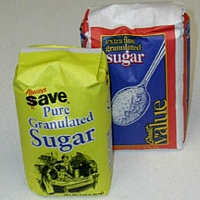
Q. Why does my weight go up and down every time I step on the scale?
A: Consider the normal body functions that occur everyday. The human body is always in a constant state of change; therefore, no one’s body weight remains constant. A persons lean body mass can move up or down by one to five pounds on any given day. These gains have nothing to do with body fat, but have more to do with other things going on in your body, such as, Water retention, hydration levels and the time of day can contribute to variations in body water. Lets not forget about, the weight of your clothes, the amount of food in your stomach and certain medications can all affect the reading on the scale.
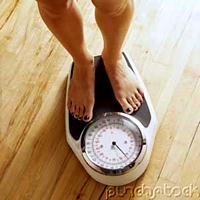
Q. Is high protien, low carb a good way to lose weight?
A: Most of the confusion of carbohydrates comes from the fact that people see and hear bits and pieces of information from friends, books, the media and workout partners. Unfortunately, most people accept the information as fact. Dropping carbohydrates(sugars) too low while on an exercise program can alter your body’s T3 levels.
T3 is an active thyroid molecule that helps regulate your metabolic rate. Meaning, eating low levels of carbohydrates can actually slow down your metabolic rate. Secondly, muscle fullness depends on carbohydrate intake. Low carbohydrate diets like the medifast diet can also cause muscle to loose density and cause muscles to flatten out. Carbohydrates are a great source of fuel, so not eating enough can lower your energy level and make your muscles feel softer. I have found that eating complex carbohydrates at breakfast and lunch meals and forgetting the carbohydrates at the final meal can actually help improve weight loss. That is a much better approach, without cutting out carbs totally. Remember balance is a good thing!
Q: Can I trust what I read/hear from the media to regarding nutrition information?
A: The media is always looking for new information and those in the media often latch onto ideas from scientific laboratories before they have been fully tested. There is a great possibility that a reporter who is not strong in understanding of science, may misunderstand or misinterpret complex scientific principles. News media people often rush out with late breaking new stories before findings are fully confirmed. Scientists uncover nutrition facts by experimentation. Single studies must be replicated before their findings can be considered valid. Here are a few things to consider:
- 1. Just because something happens in a test tube or rat, doesn’t mean it will happen in a human.
- 2. A valid experiment must be "blinded". Participants should not know if they are in the experimental group or in the placebo group.
- 3. Be leery of percentages
- 4. "May" doesn’t always mean "will".
- 5. Hidden variables may often hide the actual facts.
- 6. Sometimes studies can be flawed.
- Remember that one can alway find another piece of material that states the opposite of what you have just read. Let your body be your best judge.
Q: What are Functional foods?
A: Functional foods are foods that have health benefits beyond the nutrients they contain.
In most foods, functional benefits probably come from many, food substances.
Many fruits, vegetables and grain products have plant substances that may help reduce the risk for certain health diseases such as heart disease and some cancers.
As always more research is needed to learn about the full potential of functional foods, it is definite that functional foods play a role in good health when combined with balanced food choices and exercise.
Q: Are juices as healthy as they say?
A: Real fruit juices are definitely good for you When you’re thirsty, Drink 100 percent juice for the greatest nutritional benefit.
Good examples include pink grapefruit juice and orange juice. Choosing juice for nutrition, means reading the label. Check to be sure that the product is 100 percent juice. Read the ingredient list carefully to make sure that juice is one of the first ingredients.
As with most fruits and vegetables, the more colorful the juice, the more nutrients it contains, that may help protect against some cancers, heart disease and other chronic health conditions.Don`t forget about carrot juice. (yummie)
As more and more juices are fortified with calcium, you can double your benefit. Most juice lack fibeer unless you purchase the very pulpy ones.

Q: Are peanuts nutritional?
A: A handful of nuts is very yummie for most people. But the thought of fat in nuts tend to turn people off.
Nuts are high in fat, but the fat in most nuts is healthy, monounsaturated fat, which can help lower blood cholesterol. Good sources of monounsaturated fats include peanuts, pecans, walnuts and almonds.
Many different nuts are helpful in reducing the risk of cancer and lowering blood pressure.
Nuts also provide protein, carbohydrates and a wide variety of vitamins and minerals.
Last thing, nuts are very beneficial for filling you up. They tend to add a bit of density to your meal. Also it is shown that eating plans that include nuts are more pleasing to ones taste buds, leading people to eat less and control their weight. So enjoy nuts in your eating plan. The key is ONE small handfull.
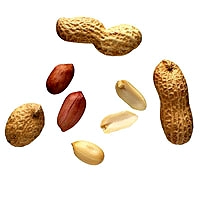
Q: Which one should I choose, bottled or tap water?
A: Bottled waters now contain everything from more oxygen to vitamins.
For most people, eating a variety of foods makes it easy to consume enough vitamins. Also more vitamins won’t improve energy performance, unless you were vitamin-deficient to begin with.
Consuming enough water is important for your bodies proper hydration. If you prefer flavored water over plain, check the label for calories per serving and added sugars.
If you don’t want to spend extra money on bottled water, try adding a lemon, lime, orange slices or a small amount of fruit juice to enhance the flavor of tap water.
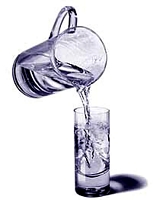
Q: Are all salts the same thing?
A: Most salts have one thing in common, they all contain sodium. So if you have hypertension or otherwise need to watch your salt intake, keep checking food labels and be very careful how much salt you use, no matter what kind it is.
We are all familiar with table or iodized salt. Recipes often refer to other types of salt, like kosher, seasoned, light, sea and rock salt. How are they different from each other? Isn’t salt, salt?
The difference between types of salt usually affects their taste and texture.
kosher salt has a coarse grain and gives a clean taste to foods.
Sea salt comes in either fine or coarse grain and has a slightly different taste caused by other minerals it contains.
Seasoned salt is flavored with herbs and other ingredients; for that reason, it actually has less salt content than other types of salt.
Rock salt is used for decorating, or to make ice cream. It is too large to be used when cooking.
Q: Is there any truth to the apple a day saying?
A: There’s truth in that cute saying, that an apple a day keeps the doctor away.
One medium-sized apple with its peel on, and gives you about 4 grams of dietary fiber in just 80 calories. That’s about 15 percent of the amount advised daily for adults. An apple’s mostly soluble fiber may help lower blood cholesterol levels by binding to fatty substances and promoting their excretion. Its insoluble fiber helps waste move through your intestinal tract faster.
Other sweet benefits? Apples, especially their peels, are loaded with quercetin. A powerful antioxidant, quercetin may reduce the growth and spread of cancer cells, and help maintain a healthy heart by protecting your blood vessels from fatty deposits. What’s more, tannins in apple juice may help keep your gums healthy.
Q: I have heard that grapefruit juice can stop the effect of certain medications. Is this true?
A: Yes, it can,one should ask their doctor to find out if grapefruit juice is a good mix with your medications.
Grapefruit juice, especially pink grapefruit juice, provides you with vitamins and minerals and other nutritious compounds.
Grapefruit juice is known to affect the way certain drugs are absorbed in the body and the list of medications is growing all the time.
Along with certain medications, grapefruit juice appears to stop the work of an enzyme in the intestine, leading to drugs being broken down and absorbed into the body faster and at higher-than-desirable levels. Research also indicates that whole grapefruit can have the same effect. At the same time, grapefruit may reduce the effect of other drugs by interacting during digestion.
Q: Do antioxidants slow down the aging process?
A: Antioxidants help prevent oxidation, may help increase immune function and possibly decrease risk of infection and cancer. Antioxidants exist as vitamins, minerals and other compounds in foods.
A few of the better known antioxidants include carotenoids, the substance that gives fruits and vegetables their deep rich colors. Apricots, broccoli, pumpkin, cantaloupes, spinach and sweet potatoes, are some good choices in addition to lycopene in tomatoes. Vitamin C and E are also good antioxidants, as well as, magnesium, copper and zinc.
Increasing the foods you eat is the first step in getting more antioxidants.
Q: Are there certain healthier foods just for females?
A: Healthy eating is not gender specific. Beware of foods that are marketed, "just for woman". This is just a marketing ploy.
Food products targeting women are hot items at supermarkets. But many provide nutrients that are easily obtained through “regular” foods and often at a cheaper cost.
If you chose fortified products for women, read the label and compare nutrients in similar products. Check the nutrients, including amounts of fat and sugar, and then decide whether it is right for you.
A very common problem is that, many women struggle to meet their daily needs of iron, calcium and folate. Try eating dairy products such as low-fat milk, yogurt or cheese. Cereals and other grain foods fortified with iron and folate can also help meet daily needs.
Remember, your goal is a healthier you, which doesn’t have to mean special foods.
Q. What can I do about "Cholesterol"?
A. Here is a wonder little chart that works pretty well for the average person. Print it out and put it on your fridge:
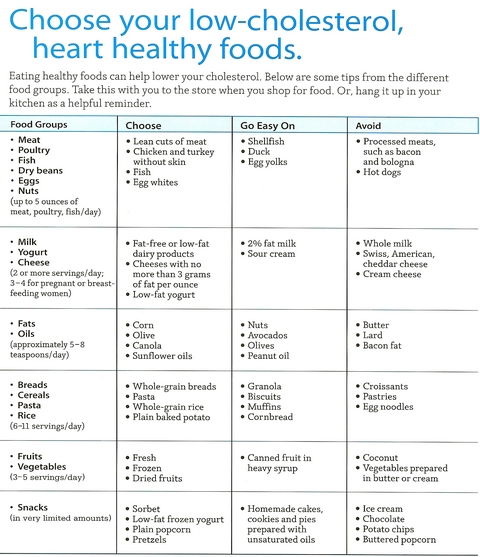
Q: How can I better my blood pressure, through my eating habits?
A: Keep your blood pressure normal, or lower it, by making some changes in your eating habits.
· Exercise at least 30 minutes a day on most days of the week.
· Consume moderate amounts of alcohol.
· Limit salt intake to no more than 2,400 milligrams a day.
· Keep your body weight down.
· Become very aware of everything you eat that contains salt.(fast foods are high in sodium)
Try consuming eight to 10 servings of fruits and vegetables, three servings of dairy foods, limited animal fat intake and increased intake of salads every other day.
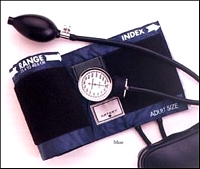
Q: What are some steps I can take to a healthier heart?
A: More women die from heart disease than from all forms of cancer combined. Women at risk often have high triglyceride levels along with low HDL, or "good" cholesterol levels.
Keep your body healthy by making some changes in eating habits. First, choose more unsaturated plant fats, like olive or canola oil. Second, choose low-fat dairy products and lean meat, fish and poultry. And finally, get plenty of physical activity to keep your blood vessels healthy and your heart pumping strong.
Q: What is the "Food Pyramid"?
A: this is a simple guideline that makes up the food pyramid. To see this in chart form click the link below here: FOOD PYRAMID (Click your back button to come back here.)
- GRAINS (make half your grains whole)
Eat at least 3 oz. of whole-grain cereals, breads,crackers, rice,or pasta everyday.
1oz. is about 1 slice of bread, about 1 cup of breakfast cereal, or 1/2 cup of cooked rice or pasta.
- VEGETABLES (Vary your veggies)
Eat more dark green veggies like broccoli, spinach and other dark leafy greens.
Eat more orange vegetables like carrots and sweet potatoes.
Eat more dry beans and peas like pinto beans, kidney beans, and lentils.
- FRUITS (Focus on fruits)
Eat a variety of fruits.
Choose fresh, frozen,canned,or dried fruit.
Go easy on fruit juices(high in sugar)
- MILK (get your calcium-rich foods)
Go low-fat or fat-free when you choose milk, yogurt, and other milk products.
If you do not or can not consume milk, choose lactose-free products or other calcium sources such as fortified foods and beverages.
- MEAT & BEANS (go lean with protein)
choose low-fat or lean meats and poultry.
Bake it, broil it, grill it.
Vary your protein routine-choose more fish, beans, peas, nuts and seeds.
Provided by Wikipedia
Q: My husband says I am addicted to sorrow eating, what is that?
A: When you eat if you are angry, hurt, or feeling any sad emotion then, that is a definite emotional eater, or sorrow eater. If food is something that comforts you when you are low, then it is time to either change that comfort habit to easy listening music, exercise or make sure you are eating very light food.
For many people, food is more than just nutrition. Eating is something to do when you’re bored, tired, anxious or when dealing with emotions. Often these behaviors can lead to overeating.
Find a balance between eating and your emotions and still enjoy your comfort foods.remeber it is all about balance.
Q: Is rice a good food?
A: Rice is a great option for most meals. It's quick, easy to prepare, and nutritious too. Brown rice is high in fiber, phytochemicals, thiamin, niacin and iron. Wild rice, also high in fiber, can add an interesting flavor and texture to a meal. Cook your rice in a flavoured broth, that adds a little zest to it. Salsa is a good friend to rice and bvery healthy for you and low in fat.
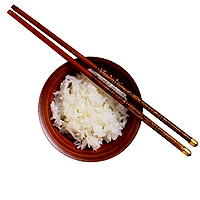
Q: I tend to be eating in restaurants a lot due to my job, any suggestions there?
A: Enjoy!But make healthy choices. Read the menu carefully and if you want to ask about light eating, most restaurants will be happy to help you. Look for entrees served "broiled," "grilled," "poached," "steamed," "roasted," or "baked." These items will be lower in fat and calories. Avoid foods described as "fried," "creamy," "crisp," "au gratin," "scalloped," or "breaded." They always contain extra fat, sodium and calories.
Q: What is the truth about granola?
A: It's long had a "healthy" reputation, but believe it or not, some granola can be sky-high in calories and fat. Luckily, there are low-fat types that cut the fat by as much as two-thirds. Add fat-free milk for a crunchy breakfast, or sprinkle some on yogurt and fruit (as always, keep an eye on portions -- it still has 200 calories per serving).
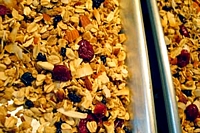
Q: I tend to feel tired through out the day and I eat well, why?
A: One of the most common reasons for feeling tired or fatigued is mild dehydration. As I have said many times,"WATER< WATER< WATER". If you have a hard time keeping track of how many glasses of water you consume, fill a 2-litre bottle of water and drink over the course of a day. If you finish the bottle, you’ve reached the goal of 8 glasses per day. This way you can see and keep track of your daily fluid intake.

Q: How bad is caffeine for my nerves?
A: Caffeine, the stimulant that gets you going, is one of the world's most widely used drugs. It has been a part of our diet for centuries. Coffee is the main source of caffeine, but soft drinks run a very close second. Here are some facts about caffeine:
Contrary to popular belief, a cup of coffee cannot help sober up a person who has been drinking.
Non-colas aren't necessarily caffeine free. Be sure to read the label if you're trying to cut down.
Caffeine is an ingredient in more than 1,000 over-the-counter drugs and prescription drugs.
For most people moderate amounts of caffeine cause no physical harm. But for some, excessive caffeine can cause anxiety, insomnia, headaches or stomach irritation.
Caffeine acts as a mild stimulant to the central nervous system and both regular and decaf coffee can irritate the stomach. Caffeine can also act as an analgesic and may help protect against gallstones, cavities, type 2 diabetes and Parkinson’s disease, but more research is needed before caffeine can be proclaimed a “disease preventer.”
Recent studies looked at caffeine intake in women from 60 to 70 years old, and found that nearly three cups of coffee a day can lead to spinal bone loss. The study followed women for a period of three years.
Researchers believe that older women are less able to offset the natural calcium loss that caffeine causes, resulting in increased bone thinning. One cup a day is plenty!

Q: Do I still need calcium once I have stopped having children?
A: Yes, calcium is essential to the development and maintenance of healthy bones and teeth. Unfortunately, many women are not getting enough calcium.
The calcium requirement for teenagers is 1,300 milligrams. After that the requirement is 1,000 milligrams until age 50, when it increases again to 1,200 milligrams.
One cup of milk or yogurt provides 300 milligrams. So consuming three servings of dairy products a day is a good way to meet your needs. Enjoy milk, cheese and yogurt alone or mixed in other dishes.
You can also increase you calcium intake by consuming non-dairy foods such as broccoli and calcium-fortified foods.
Q: How many calories should I take in per day?
A: The Food and Drug Administration’s Obesity Working Group made news recently with a report on health and nutrition in America that emphasized calorie control in weight loss and weight management. Figures from the Centers for Disease Control and Prevention show that many of us have some work to do when it comes to calorie control.
Men report that they consume almost 170 more calories per day than they did in 1971. (up to an average of 2,600 calories)
Women are reporting consumption of 335 more calories per day (an average of 1,900).
Also people tend to underreport their food intake when asked about it, meaning we are probably consuming more calories than we admit to. Much of the increased calorie intake since the early 1970s comes from sugary snacks and soft drinks, according to the CDC.
Take control of your calorie intake by choosing whole grains, fruits and vegetables along with lean meat and low-fat dairy foods.
Q: Is red or white wine better?
A: Red or white?
The rule of thumb: white wine with chicken or fish, red with meat,doesn’t take into account a meal’s layers of flavors or the distinctive flavor differences among red and white wines. Some wine experts say the right wine is a matter of personal preference. People have differnet taste buds.
Drinking wine, either white or red,in moderation may offer some heart-healthy benefits, perhaps boosting HDL- (good) cholesterol, helping prevent LDL- (bad) cholesterol from forming, or helping prevent blood platelets that cause heart attacks and strokes from clotting. Plant substances in grapes, such as resveratrol (flavonoid) and tannins, may contribute to these benefits. The alcohol may be a factor, too.
Just remember Ladies one 5-ounce glass per day, is the healthy way.

Q: Is "Flax Seed" good for me?
A: Yes. Omega-3 fatty acids can help lower your risk for heart disease, boost the immune system and protect against arrhythmias, but consuming enough can sometimes be a challenge. I like to add them to my toast and my salads.
Omega-3 fatty acids are found in fatty fish and flaxseed. Fatty fish includes tuna, salmon, sardines and herring. Other fish and some vegetable oils have omega-3’s, just in much smaller amounts. You can buy flaxseed as whole seeds, ground flaxseeds and flaxseed flour. Flaxseed can be used in breads or muffins, either as whole seeds or ground and used in place of some of the flour.
Flaxseed can also be found in food products in the supermarket. Breads, cereals, energy bars, pancake and waffle mixes are a few of the options available.
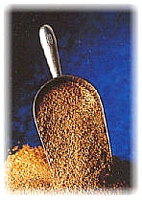
Q: Is fish really that good for a persons brain?
A: A study conducted for the Rush Institute for Healthy Aging analyzed fish-eating patterns of more than 800 men and women ages 65 to 94 and the rates at which they developed Alzheimer’s disease within several years. The researchers found that those who ate at least one fish meal per week were significantly less likely to develop Alzheimer’s than those who never ate fish.
This study supports other research on the positive role of omega-3 fatty acids in brain cell health. Omega-3 DHA is known to keep brain cell membranes healthy and appears to aid communication within brain cells.
So you can eat well and keep your brain sharp and your heart healthy by adding more fatty fish like tuna, salmon, mackerel and sardines to your eating plan.

Q: Do I have to stop eating chocolate forever to stay healthy and fit?
A: The fat in chocolate is a combination of saturated and unsaturated fat and does not appear to increase blood cholesterol levels. A serving of chocolate contains about as much caffeine as one cup of decaffeinated coffee.
Research shows that chocolate contains antioxidants that may help prevent cholesterol from sticking to artery walls, reducing your risk of a heart attack or stroke. Chocolate also contains flavonoids, which are the same compounds that give red wine and tea their disease-preventing benefits. The darker the chocolate, the more antioxidants and flavonoids it contains.
Don’t forget the amount of chocolate you eat can make a difference in your calorie intake, so enjoy it in moderation.
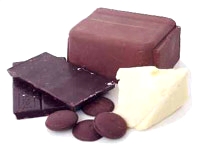
Q: Is cheese high in fat?
A: Cheese provides flavor to many dishes and snacks. More than 400 varieties of cheese are available for dipping, snacking and serving. Careful though, cheese can add a fair amount of fat to yourbody.
If you are a cheese lover, help control the fat by trying these options:
Low-fat mozzarella or ricotta, which complement many casseroles.
String cheese, a portion-controlled, lower-fat option.
Sharp cheeses, which allow you to enjoy all the flavor with smaller portions.
Shredded cheese, which helps you use less.
Grated or crumbled cheese like feta, blue or Parmesan, for flavor that lasts.
Remember that reduced-fat or low-fat cheeses may not work as well when used in cooking. They tend to have different textures.
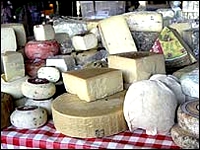
Q: What is a glycemic index?
A: The Glycemic Index.(GI)
The GI is used as a measurement of the impact individual foods have on blood sugar levels. The GI ranks foods against white bread or glucose according to their potential to raise blood glucose levels in the body. However, most foods are consumed with other foods, not by themselves, and eating combinations of foods can alter the GI for each meal component.
In addition, there is insufficient research to show that the GI of a food of a meal has any effect on weight loss or gain.
The best habit still is to consume a variety of foods including whole grains and nutrient-rich carbohydrates in portions that are appropriate for your amount of energy use.
Q: Is peanutbutter bad or good?
A: Peanut butter is a very yummie way of lowering your cholesterol and reducing risk of heart disease.
Research shows that peanut butter, along with peanuts, can help lower blood cholesterol and protect against heart disease, when used in a heart healthy eating plan.
Peanuts appear to have this effect because they contain healthy fats. Other nutrients include fiber, vitamin E, folic acid, magnesium, copper and zinc. As with many other studies, the benefits of peanuts were seen with consumption of the food, not supplements.
Remember as in all good eating habits, keep portion sizes small.

Q: Can anyone lose weight at any age?
A:Yes, Yes, YES. Ladies it all boils down to you, and what you want and what you are willing to do to get there! JUST DO IT is my motto! Focus on better eating habits and move it to lose it!! GOOD LUCK!!
|